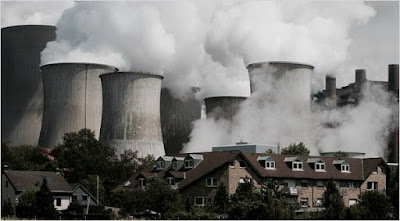Sustainable agriculture
In most traditional farming of the past, a significant amount of carbon and nutrients are removed from soil without being replaced. Major contributing factors to the depletion of healthy soil are over-tilling the land and monoculture (or growing one type of plant on a farm). From processes like these, there is the removal of nutrients from soil, leading to poor fertilization from year to year, as well as the increase of an environment ripe with bugs and vermin. Basically, the farmer slowly loses control of the farm as a whole when the quality of the soil is not managed over time.Sustainable agriculture works to make sure that farming is done in ways that protect ecosystem quality. It is important for the farmer implementing sustainable agriculture techniques to understand the relationship between all organisms and the environment, along with the importance of maintaining nutrients within soil, water and air, and the environment as a whole.Some examples of sustainable agriculture include those on farms that work to satisfy human food and fiber needs. There are others that enhance environmental quality and agricultural economy through improvement of natural resources.
Sustainable agriculture makes efficient use of non-renewable resources, as the loss of these are one of the leading issues in depleting nutrient levels in soil and other needed areas for the farmland. All of this works together for the improvement of the economic value of farm operations and quality of life for farmers and society as a whole.In focusing on possible improvements of the farmer's carbon footprint in implementing sustainable agriculture, there are the points of balancing sun, air, soil, water and nutrients, all needing replenishment in one way or another. While sun and water often remain in the standard value of their region, some issues with poor irrigation and other water values that can always reduce quality of agriculture. Then there is also the need for soil nutrition to help maintain long-term quality growth.
Carbon, nitrogen and oter nutrients can be added with recycling crop or livestock manure for natural fertilization, through the growth of legume and forage crops for nitrogen added to soil. Another example of sustainable farming is the independent production of nitrogen through the Haber process that uses hydrogen from natural gas or possibly electricity.
Also important is the ability to manage long-term crop rotations while still working to help improve the farmer's carbon footprint and the quality of life in their land. Natural fertilizer processes help with the soil, while there is also the importance of maintaining use of natural water resources and management of the level of non-renewable energy resources used on the farm to help maintain proper levels of phosphate and nitrogen in the land.
With the added efficiency on the farm, certain crops, plant and animal waste, tree and plant croppings, etc..can also be used as sources for biomass/ biofuel. It's all about nature management and planning for quality land and growth.


